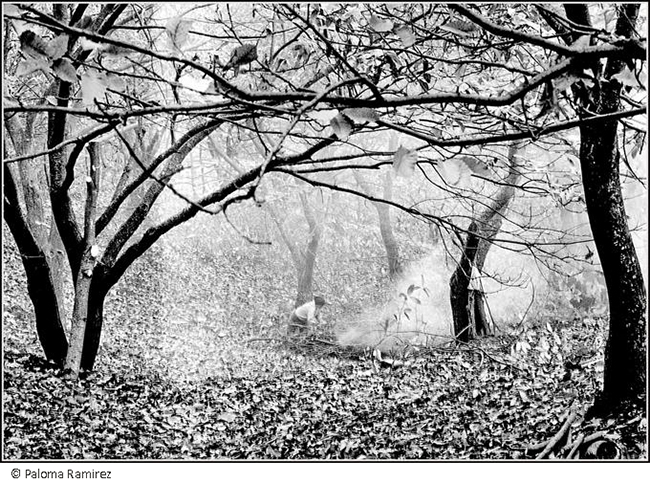Is photography devalued?
© Guillermo Labarca
 Photography is blamed for many things. For example, says Wim Wenders, filmmaker and photographer: "The art of looking has changed. Can we still just look at something in peace, happily, without taking a photo or making a video?" Others, photographers too, lament that with its massification photography has lost value, photos are no longer appreciated and treasured, they are not even printed much; they only illustrate passing moments that are lost, without reaching greater meaning.
Photography is blamed for many things. For example, says Wim Wenders, filmmaker and photographer: "The art of looking has changed. Can we still just look at something in peace, happily, without taking a photo or making a video?" Others, photographers too, lament that with its massification photography has lost value, photos are no longer appreciated and treasured, they are not even printed much; they only illustrate passing moments that are lost, without reaching greater meaning.
Easy claims to share, but are they true? Well, like most general statements that claim to encompass the entire universe, no, they are not true or are only partially true. Neither the art of looking nor photography have lost their value. It has simply happened that with the development of photographic and video technologies some have learned to see better and also to develop the photographic language, taking photographs, reading them and discovering the information they have like never before.
The same thing happened with reading and printing; that books become more accessible and more people could read did not make people read or write better, only that many more could own books that many more could write books. That did not make that literature lose value, on the contrary, magnificent writers and readers who read and decipher them appeared and appear every day. At the same time there is a banal production that has its readers.
Something very similar is happening with photography. By looking through a lens or a screen we learn to frame what is in front of us, to fix what we want to keep, to define the focus, to find relevant details. On the other hand, there are so many photographers who invite us to look in a concentrated way at details that otherwise would have escaped us, there are many in this same magazine, in previous issues and in this one, who open our eyes and make us feel the emotion and what it means for a worker to be in the middle of nature, others teach us to look at wild or tame nature or to look at family, friends or strangers in privacy, we also capture more precisely the contrast between the human work , buildings, streets, houses, bridges and what surrounds it, open our eyes to professions and activities that we were unaware of, in short, to the world that surrounds us and that we had not always perceived. All of them are photographers who currently operate using the most modern technologies or who continue to use the traditional ones.
It is true that banal photographs are made, and many of them, but just as with literature, each one chooses what they want to see or what they want to read. Photography is a language that is learned, as one learns to read and write. You learn to understand difficult texts and you have to learn to know how to "read" the photographs. That photography becomes popular and accessible to anyone who has a phone or a camera is the gateway to that learning.
The photos of the past have also benefited from this boom in contemporary photography, today we are able to obtain more information and more varied and complex feelings than those produced by those same photos at the time they were taken, the photographic experience we have today adds to the original meaning of those photos a layer of nostalgia, knowledge, distance that widens and makes the value of each image more complex. It may be that now the photos are not stored as before, but this characteristic is also something that we have to learn to interpret.
 Photography is blamed for many things. For example, says Wim Wenders, filmmaker and photographer: "The art of looking has changed. Can we still just look at something in peace, happily, without taking a photo or making a video?" Others, photographers too, lament that with its massification photography has lost value, photos are no longer appreciated and treasured, they are not even printed much; they only illustrate passing moments that are lost, without reaching greater meaning.
Photography is blamed for many things. For example, says Wim Wenders, filmmaker and photographer: "The art of looking has changed. Can we still just look at something in peace, happily, without taking a photo or making a video?" Others, photographers too, lament that with its massification photography has lost value, photos are no longer appreciated and treasured, they are not even printed much; they only illustrate passing moments that are lost, without reaching greater meaning.
